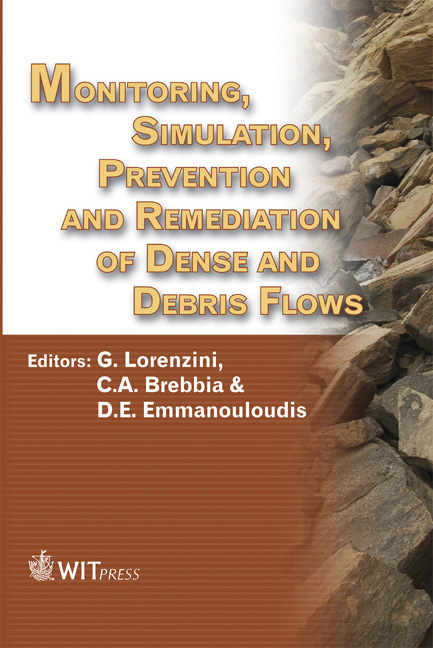Risk Analysis And Risk Management In Maesstobel
Price
Free (open access)
Transaction
Volume
90
Pages
5
Published
2006
Size
1,665 kb
Paper DOI
10.2495/DEB060281
Copyright
WIT Press
Author(s)
G. Jaeger & R. Schmidt
Abstract
The catchment area of the Maesstobel in Vorarlberg (Western Austria) has a potential rockfall volume of up to 800,000 m³. Even a smaller rockfall can already block the suggadin river. A subsequent dam failure would cause severe damages to the town of St. Gallenkirch. In order to get reasonable Hazard zone maps, hydrological and 2-D hydraulic simulations were carried out. To secure a bypassing road and to warn the inhabitants of the valley and the construction workers at site an early warning system was installed. Keywords: debris flow, simulation, early warning, rock fall. 1 Introduction The Maesstobel with a catchment area of 0,42 square kilometres, shows significant hazard potential due to rockslide in its upper reach. According to a geological study, this rockslide sped up in the course of 1999. The hazard scenario is such that 800,000 m³ of rocks and debris flows tumbling down could impound the receiving water of the Suggadin stream; there is thus the danger of dam failure and a subsequent flood wave. The hazard zone map of St. Gallenkirch, which was approved in 2002, features sizable hazard zones of high impact at the Suggadin stream’s deposition fan. The objective of the project was as follows: on the basis of new insights and recordings of the Maesstobel catchment area, the hazard potential and the consequences of a subsequent flooding for the settlement area of St. Gallenkirch were to be assessed, and on this mitigation measures were to be derived to
Keywords
debris flow, simulation, early warning, rock fall.





